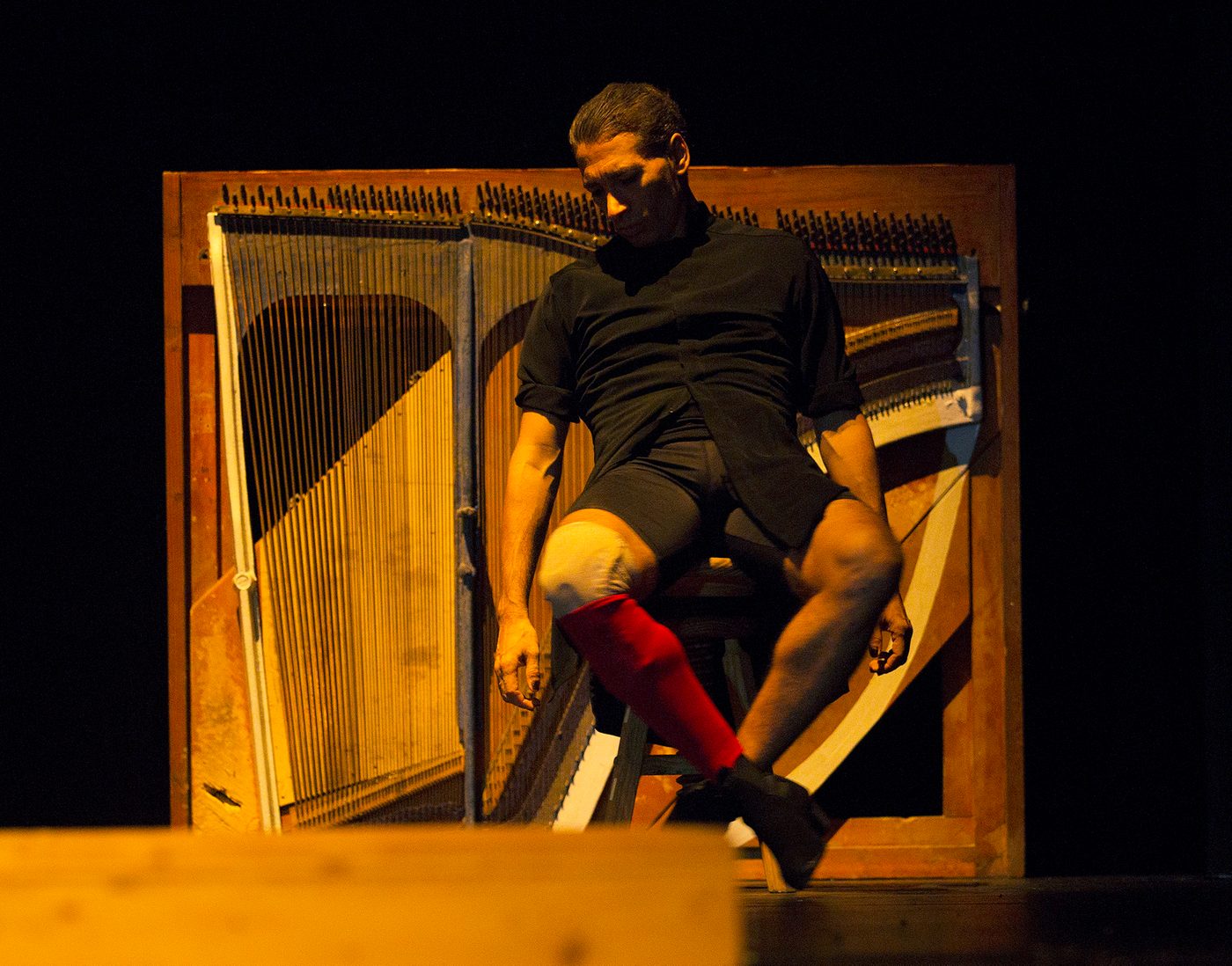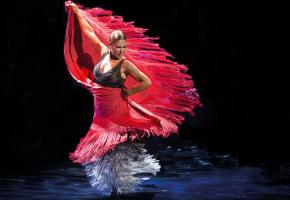Israel Galván was, quite literally, already dancing in his mother’s womb, for she (Eugenia de los Reyes Bermúdez) was also an accomplished dancer herself and, being pregnant, did not stop her for long. With his father, bailaor José Galván, being the founder of the José Galván Flamenco Studio, he was born into a family dynasty with Flamenco deep in its blood.
As a child, Galván was already performing and winning awards, shining with his fine sense of timing and form. In some cases, he was to be found dancing on stages during hours that were illegal for a child and had to be smuggled out of clubs when Police raided.
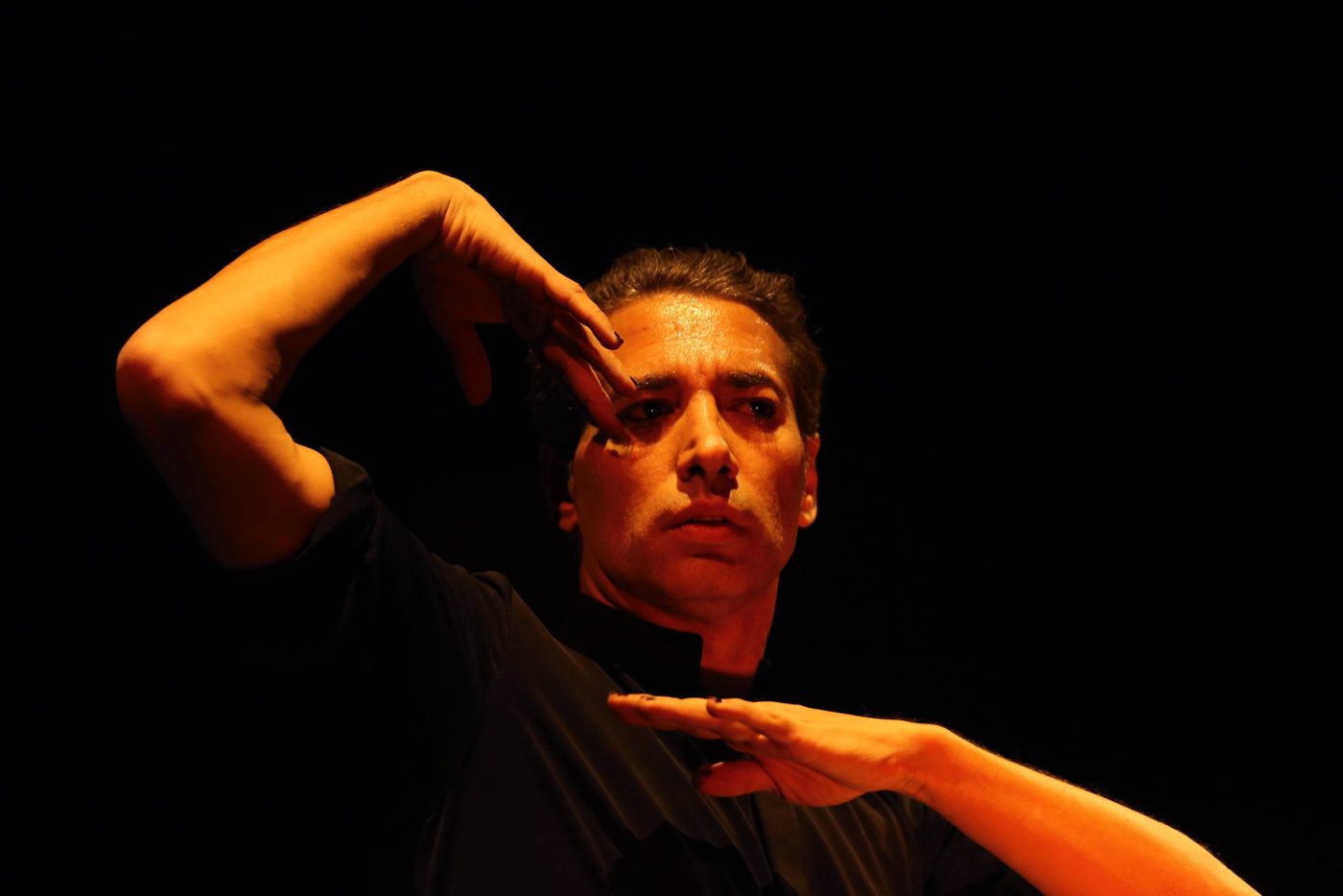
His life changed when, in 1998, inspired by the story of Flamenco dancer Félix Fernández García, known as ‘El Loco’, he created his first work, ‘Los Zapatos Rojos’ (The Red Shoes) where he began to explore new forms and shapes. He started to enter unexpected territories, where he could find darkness, even anger, as the duende of Andalucía emerged in his dance in different forms with angular shapes that darted and swayed: -
“It was my first creation and I realized then, that for me, it was no longer a case of dancing well or badly, but of creating my own language, my own character and style.”
With this piece, Galván had taken the first irretrievable step towards his own individual way of expressing himself. It was no coincidence that the story he chose for this first venture was that of El Loco, who, between 1917 and 1919, worked with the Ballet Russe of Diaghilev and, in particular with lead dancer and choreographer, Léonide Massine.

Félix was hired by Diaghilev on 1917 to teach flamenco moves to his Russian dance troupe (including Nijinsky) in preparation for their performance of El Amor Brujo (The Sorcerer’s Love) by Manuel de Falla (with costumes & sets by Pablo Picasso). Sadly by 1919, El Loco had been arrested, even before the première and placed in a mental home where, tragically, he was to remain for life. Yet, those two years that Félix and Massine worked together had a lasting impact on the future direction of the dance troupe, so much so, that Massine was hailed as one of the greatest stars and choreographers in the world.
It was on this fascinating tale that Israel Galván ventured to introduce new forms in to the traditions of Flamenco: -
Israel Galván: “Some time before, I had seen photographs of Nijinsky. I copied his shapes, his hand positions and his profile, which I began to use as I danced. Of course, we never saw Nijinsky dance, all we have are photos, but with those images, I began to invent and choreograph a dance that was my own creation. I always felt he was close, as he was not a typical ballet dancer, using, as he did a completely new language. Later, I went to see Nijinsky’s works [on stage] and others to Stravinsky’s music and the choreography that the dancers used was so deeply rhythmical that it seemed more flamenco than Spanish classical dance. As with that music and the magic of ‘The Rite of Spring’, there is also a ritual with this music, so that every time it’s played, the very first note totally changes the mood. There is something so magical that you don’t have to explain anything, because with just the music and the tension created by those beats and the atmosphere, it feels like Flamenco or a bullfight that is so powerful, you would think there had been a death!”
 Israel Galván
Israel Galván
The reactions to this new work were immediate, with some accusing him of betraying his own Flamenco roots. But Galván was no longer just a flamenco dancer, he had evolved and was developing new forms of expression at a visceral level: -
“The truth is that the reaction was very divided. I remember there were some who thought it was a work of genius and others who were convinced I was throwing away my career, despite everything I had done and all the prizes I had been awarded! My parents kept reminding me that I had two children to care for so I should avoid my destruction and think about the kids!”
As Galván’s outlook gradually widened, he was inspired by other experimental dance theatre groups such as Pina Bausch, as well as Kazuo Ohno (and Japanese Butoh), with its dark and expressionist language that Galván immediately understood.
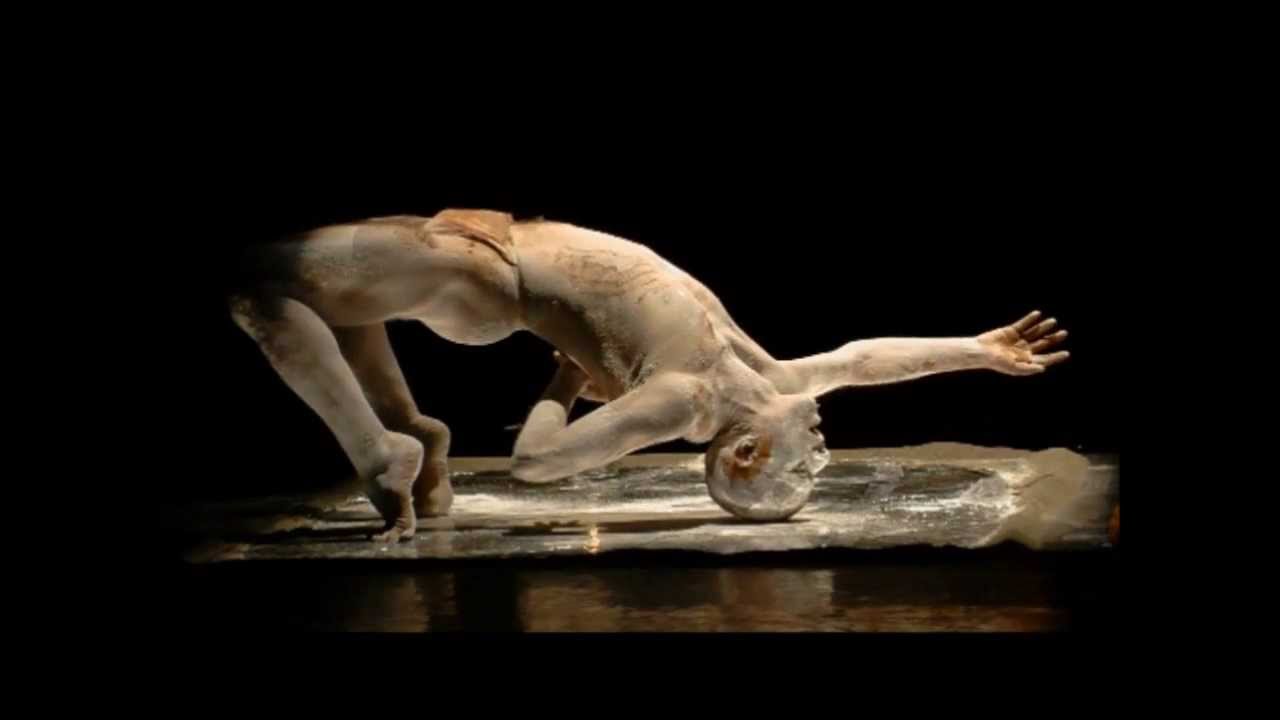
Japanese Butoh dance
In his current presentation of Igor Stravinsky’s ‘The Rite of Spring’(Le Sacre du Printemps) that he’ll be presenting at Sadler’s Wells later this month (November 25th and 26th), , Galván has minimized the set down to a single bailaor, with the innards of one piano and two other pianos in action, played by Daira van den Bercken and Gerard Bouwhuis. The theme of the piece is based on primitive, primal Russian rituals that celebrates the arrival of spring, during which a young virgin is chosen to sacrifice herself by dancing to death, to thus ensure the renewal of mother earth. His movements echoing a form of kinetic cubism slashing the space and creating circular and angular forms within it.
Here, in his version of ‘The Rite of Spring’ Galván’s body becomes another instrument. As he dances, he becomes the driving percussive element in the work. He challenges our emotions, breaks down barriers and emphasizes the powerful physicality of the piece.
Galván created ‘Torobaca’ a collaborative piece with Akram Khan, British born dancer of Bangladeshi roots. Khan was trained in Indian classical dance Kathak and contemporary dance. It introduces sound effects and voices like concrete poetry with controlled lighting, that lights up sectors of the body at times, almost dismembering the figures as they move. Akram describes it as “A dialogue, not a competition”.
Considering the success of this collaboration, it is, nevertheless, not usual for Galván to work with others very often: -
“Above all it is almost by chance that people get together and unite in life, perhaps because when I dance I ‘sweat out’ my ideas, even the most personal, in order to reach something new through the music and images. I would say it is way of life… The truth is that I am quite timid, so I prefer to dance alone, with objects and the musicians. Flamenco is very individual, and so when I dance with another artist, that person has to be like a twin brother. In ‘Torobaca’ with Akram there was a strong connection, because he comes from a background of traditional classical Indian dance like Khatak that he combines with modern contemporary dance … with those rhythms.”
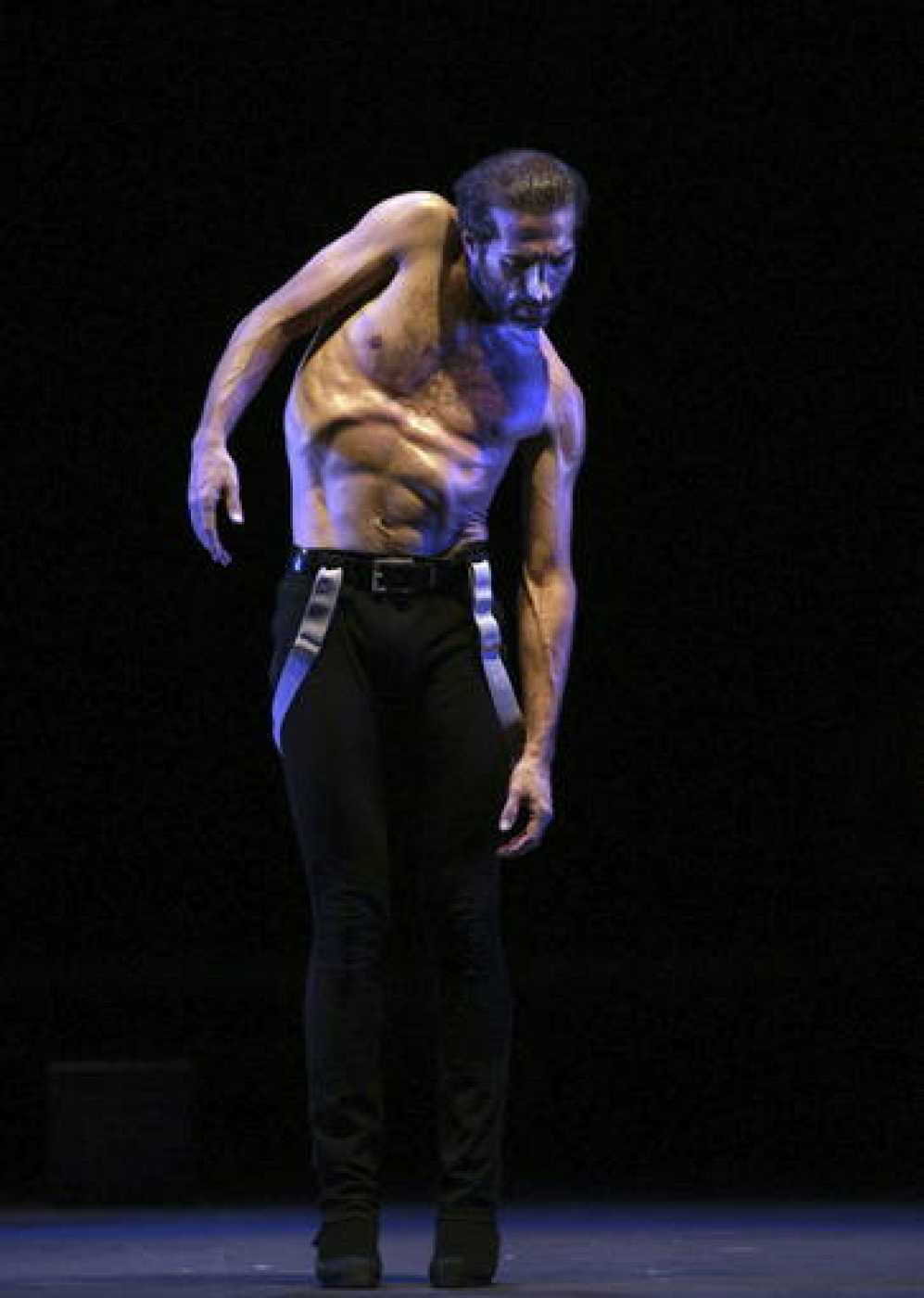
'Lo Real' 2015 with Israel Galván
Israel Galván has never flinched from a challenge and has put himself on the line with every work he has produced as in ‘Lo Real’ (2015), an expressionistic homage that he created to those who suffered in the Holocaust. For this, he worked intensely on his body to create the distortions that could emphasize the brutality of man on man, with all its death and grief. Interestingly, death is also ever-present in Flamenco, as it is in the folklore and myths of Andalucía. Hitler incarcerated many for their views, not only Jews, also Jehovah’s Witnesses and of course, gypsies as well. ‘Lo Real’ is so dark and visceral, that when it premiered in Madrid, the audiences were so revulsed and shocked that it took time for the work to be appreciated.
Despite this, Galván never strays far from reality. When asked what his greatest dream was, he replied: -“That my favourite football team Real Betis wins the match on Sunday!”
Israel Galván’s interpretation of ‘THE RITE OF SPRING’ will be on at Sadler’s Wells on November 25th and 26th 2022. Tickets here: https://www.sadlerswells.com/whats-on/israel-galvan-la-consagracion-de-…
Also on Netflix: a documentary film on Israel Galván will be available as part of the Netflix series ‘Move’. Trailer : https://fb.watch/gB9aN9qu5o/


